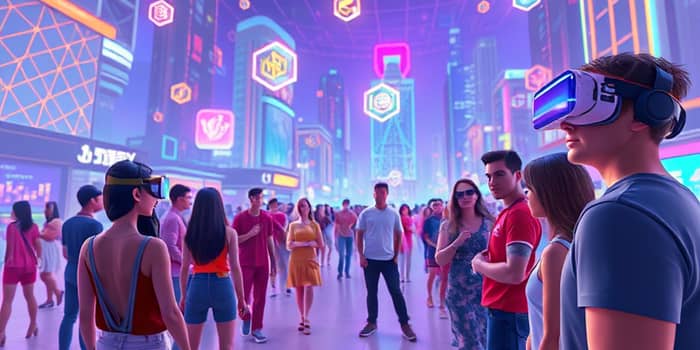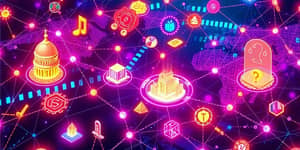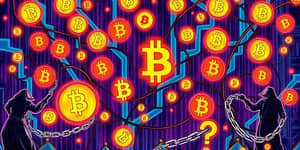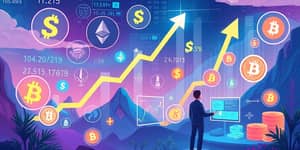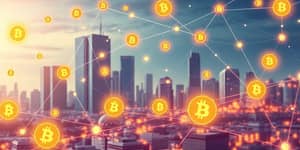The convergence of the Metaverse and blockchain technology promises a new era of digital experience—one where users truly own, trade, and interact in secure, immersive environments. By leveraging virtual reality, augmented reality, and decentralized ledgers, this seamless integration enables a vibrant economy and unprecedented social connectivity.
At its core, the Metaverse is a three-dimensional interactive virtual world, built on VR, AR, and MR platforms, while blockchain is a decentralized digital ledger that ensures transparency and security. Together, they form a foundation for user-driven digital ecosystems free from central authority and vendor lock-in.
Technical Foundations
Integrating blockchain into the Metaverse relies on several architectural pillars designed to guarantee trust, provenance, and interoperability.
Metaverse architecture combines immersive technologies with decentralized networks to create environments where every transaction and interaction is recorded on an immutable ledger. This creates a transparent, tamper-proof environment for users to build and trade assets.
- Digital Ownership & Provenance: NFTs represent unique virtual assets, such as land, art, and apparel, verifiable on-chain.
- Decentralized Identity Management: Users control their identities and personal data, reducing reliance on third-party platforms.
- Interoperability Protocols: Decentralized identifiers (DIDs) and token standards allow assets to move across different metaverse platforms.
By standardizing protocols and leveraging smart contracts, developers can ensure that avatars, digital real estate, and tokens are fully portable and functional across multiple virtual worlds. This approach addresses the fragmentation of existing virtual platforms and paves the way for seamless experiences.
Key Use Cases and Applications
The synergy of blockchain and the Metaverse unlocks diverse economic, social, and industrial applications.
Economic & Marketplace Innovation fuels new forms of commerce:
- NFT Marketplaces: Platforms like OpenSea and Rarible enable immersive trading of art, collectibles, and in-game assets in transparent, trustless environments.
- Virtual Real Estate: Decentraland and The Sandbox boast virtual plots whose values have soared, traded in MANA and SAND tokens, and monetized through events and rental agreements.
- Decentralized Finance (DeFi): In-metaverse lending, borrowing, and yield farming introduce programmable money into immersive worlds.
Social and Professional Applications span remote work to education:
Avatars in virtual offices or classrooms can collaborate with lifelike presence, going beyond video conferencing. Blockchain-backed credentials verify certifications and training modules, enhancing trust in digital learning platforms.
Enterprise & Industry Solutions leverage digital twins and supply-chain tracking:
Manufacturers use blockchain-based metaverses to monitor assets, record provenance, and simulate production line adjustments. In healthcare, patient data can be securely shared in controlled virtual environments, while financial institutions explore virtual branches and advisory services.
Economic and Social Impact
Recent data underscores the momentum of this integration. A March 2022 Statista survey reported that over 17% of global IT firms were investing in Metaverse projects spanning finance, education, and healthcare. Projections indicate AR and VR could contribute $1.5 trillion to the global economy by 2030, driven largely by blockchain-enabled services.
NFT sales in metaverse platforms reached multi-billion-dollar volumes in 2021–22, reflecting strong demand for virtual goods. As creators and businesses explore tokenization, digital marketplaces have democratized access to entrepreneurship and artistic expression.
- Decentralization: Empowers users with genuine ownership of assets and data, mitigating monopoly power.
- Enhanced Security: Cryptographic verification and immutable records protect against fraud and censorship.
- New Economic Models: Play-to-earn and tokenized incentive schemes reward active participation.
Challenges and Limitations
Despite the promise, several hurdles remain before full-scale adoption:
- Scalability & Performance: Blockchain networks can suffer from congestion and high transaction fees, affecting real-time user experiences.
- User Experience Barriers: High-quality VR/AR hardware remains expensive, and onboarding non-technical users demands intuitive interfaces.
- Privacy & Regulatory Uncertainty: While blockchain enhances security, comprehensive privacy is elusive, and global regulations around digital assets are still in flux.
- Interoperability Standards: Universal protocols for asset and identity transfer across metaverses have yet to be established.
Future Outlook
Major technology, gaming, and finance companies are pouring investments into Metaverse initiatives, signaling a transformative shift in how we work, play, and socialize. As blockchain protocols mature and hardware becomes more accessible, we can anticipate:
- Deeper decentralization of virtual economies, reducing reliance on centralized intermediaries.
- Enhanced cross-platform interoperability through standardized token and identity frameworks.
- Innovative business models, from virtual trade shows to tokenized event tickets, broadening revenue opportunities.
Ultimately, the seamless integration of the Metaverse and blockchain holds the potential to redefine digital interaction—empowering individuals, fostering inclusive economies, and unlocking creative frontiers once constrained by physical boundaries.
References
- https://www.icertglobal.com/metaverse-and-blockchain-blog/detail
- https://www.leewayhertz.com/metaverse-use-cases-and-benefits/
- https://www.nadcab.com/blog/how-does-blockchain-work-with-the-metaverse
- https://www.dreamsoft4u.com/blog/best-metaverse-use-cases-benefits
- https://rejolut.com/blog/metaverse-and-blockchain/
- https://blockchaintechs.io/metaverse-use-cases-and-benefits/
- https://cointelegraph.com/learn/articles/what-is-metaverse-in-blockchain
- https://www.xrtoday.com/virtual-reality/how-can-consumer-and-industrial-blockchains-power-the-metaverse/

